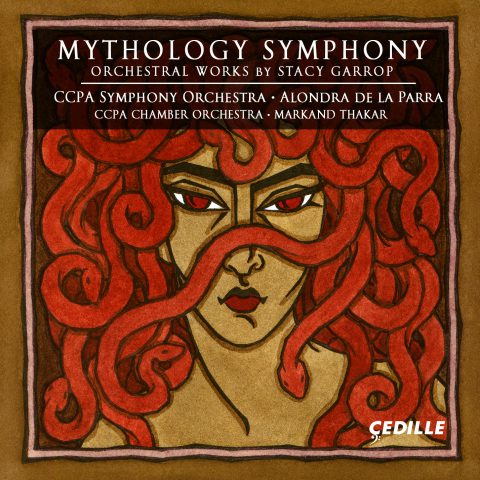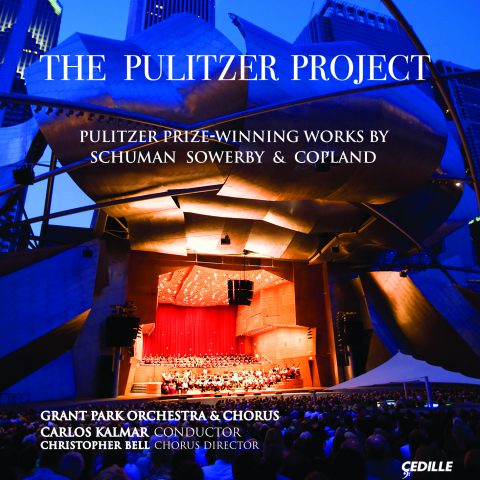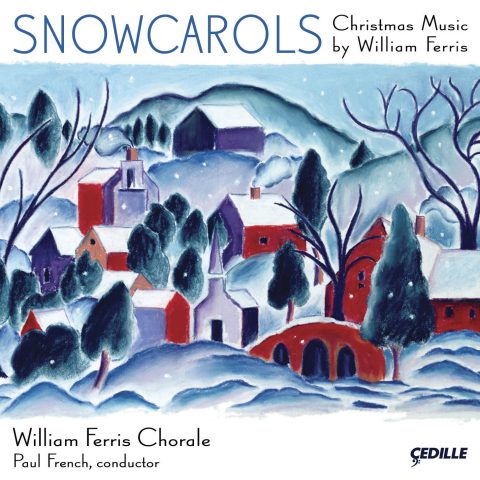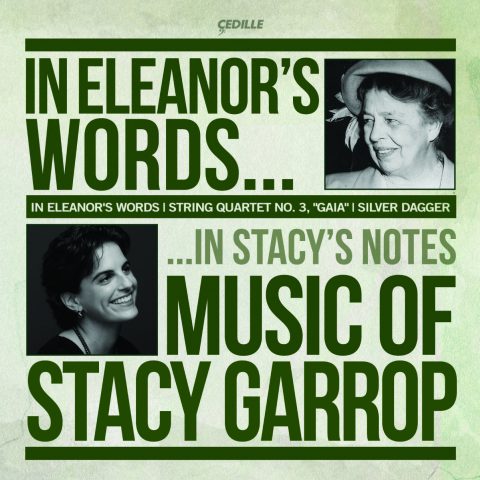Store
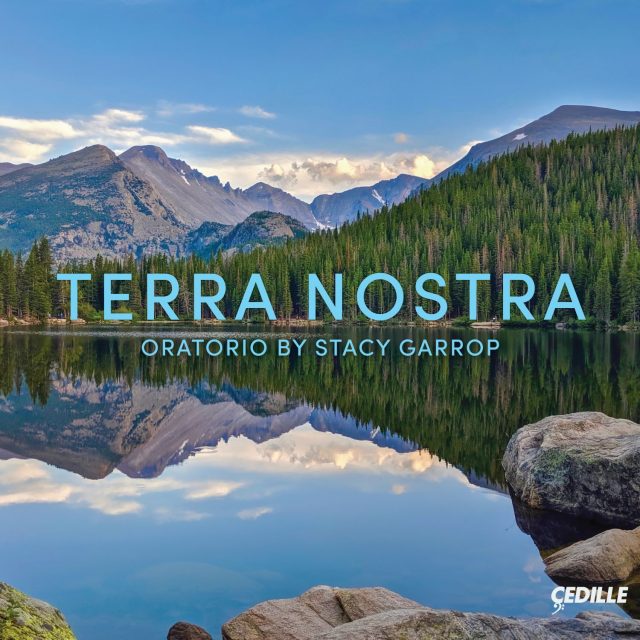
In celebration of Earth Day 2024, Cedille Records released the world premiere recording of Stacy Garrop’s monumental oratorio Terra Nostra, “a spellbinding dive into the history of the planet” (Chicago Classical Review). Terra Nostra explores the relationship between humanity and Earth, and how humankind can re-establish a harmonious balance. Stacy Garrop’s music is characterized by its lyricism and vivid storytelling. She has been described by the Chicago Tribune as “one of Chicago’s most keenly sensitive composers” and praised by the Pittsburgh Tribune-Review for music that “excites the enthusiasm of performers and audiences alike,” while the Detroit Free Press remarks, “she has “a sharp ear for instrumental color and narrative form: She can tell a story.” Declared an “oratorio that embraces the whole world” by the San Francisco Chronicle, Garrop’s tour de force is an interconnected musical narrative presented in three parts: Creation of the World, The Rise of Humanity, and Searching for Balance. The multifarious text weaves together creation myths from India, North America, and Egypt, excerpts from the Bible’s Old Testament, classic poetry from Walt Whitman, Lord Byron, Lord Alfred Tennyson, Edna St. Vincent Millay, and contemporary writings by Esther Iverem and Wendell Berry, among others.
Terra Nostra is performed by soloists soprano Michelle Areyzaga, mezzo-soprano Leah Dexter, tenor Jesse Donner, and bass-baritone David Govertsen, the Northwestern University Symphony Orchestra & Chorale, Alice Millar Chapel Choir, and Chicago’s Uniting Voices, all led by acclaimed conductor Stephen Alltop. Terra Nostra is Cedille’s 13th recording featuring Garrop’s music. The album is produced and engineered by the Grammy-winning team of James Ginsburg and Bill Maylone. It was recorded February 6 & 8, 2023 at the Pick-Staiger Concert Hall in Evanston, IL.
Terra Nostra is made possible by the generous support of Jim Stone and The Jerome H. Stone Family Foundation, Theodore N. Foss and Kent S. Dymak, and the Ruth Bader Ginsburg Fund for Vocal Recordings at Cedille Records.
Cedille is donating 25% of its revenues from website CD sales (for the first year of sales) to Climate Action Network, a global network of non-governmental organizations working collaboratively to advocate for policies and initiatives that address climate change and promote sustainable practices.
Click here for a playlist inspired by this recording.
Listen to Jim Ginsburg’s interview
with Stacy Garrop on Cedille’s
Classical Chicago Podcast!
Click here for a list of Uniting Voices musicians on this recording.
Click here for a list of Northwestern University Symphony Orchestra and Chorus musicians on this recording.
Click here for a list of Alice Millar Chapel Choir staff.
Preview Excerpts
STACY GARROP (b. 1969)
Part 1: The Creation of the World
STACY GARROP (b. 1969)
Part II: The Rise of Humanity
STACY GARROP (b. 1969)
Part III: Searching for Balance
Artists
Program Notes
Download Album BookletProgram Notes
Notes by Stacy Garrop
TERRA NOSTRA focuses on the relationship between our planet and mankind, how this relationship has shifted over time, and how we can re-establish a harmonious balance. This concept is presented over the course of three parts.
PART I: CREATION OF THE WORLD celebrates the birth and beauty of our planet. The oratorio begins with creation myths from India, North America, and Egypt that are integrated into the opening lines of “Genesis” from the Old Testament. The music surges forth from these creation stories into “God’s World” by Edna St. Vincent Millay, which describes the world in exuberant and vivid detail. Percy Bysshe Shelley’s “On thine own child” praises Mother Earth for her role bringing forth all life, while Walt Whitman sings a love song to the planet in “Smile O voluptuous cool-breathed earth!” Part I ends with “A Blade of Grass,” in which Whitman muses on how our planet has been spinning in the heavens for a very long time.
PART II: THE RISE OF HUMANITY examines the achievements of mankind, particularly since the dawn of the Industrial Age. Lord Alfred Tennyson’s “Locksley Hall” sets an auspicious tone that mankind is on the verge of great discoveries. This is followed in short order by Charles Mackay’s “Railways 1846,” William Ernest Henley’s “A Song of Speed,” and John Gillespie Magee, Jr.’s “High Flight,” each of which celebrates a new milestone in technological achievement. In “Binsey Poplars,” Gerard Manley Hopkins takes note of the effect that these advances are having on the planet, with trees being brought down and landscapes forever changed. Percy Bysshe Shelley’s “A Dirge” concludes Part II with a warning that the planet is beginning to sound a grave alarm.
PART III: SEARCHING FOR BALANCE questions how we can create more awareness for our planet’s plight, re-establish a deeper connection to it, and find a balance for living within our planet’s resources. Three texts continue the Earth’s plea that ended the previous section: Lord Byron’s “Darkness” speaks of a natural disaster (a volcano) that has blotted out the sun from humanity and the panic that ensues; contemporary poet, Esther Iverem’s “Earth Screaming” gives voice to the modern issues of our changing climate; and William Wordsworth’s “The World Is Too Much With Us” warns us that we are almost out of time to change our course. Contemporary agrarian poet Wendell Berry’s “The Want of Peace” speaks to us at the climax of the oratorio, reminding us that we can find harmony with the planet if we choose to live more simply, and to recall that we ourselves came from the earth. Two Walt Whitman texts — “A Child said, What is the grass?” and “There was a child went forth every day” — echo Berry’s thoughts, reminding us that we are of the earth, as is everything that we see on our planet. The oratorio concludes with a reprise of Whitman’s “A Blade of Grass” from Part I, this time interspersed with an additional Whitman text that sublimely states, “I bequeath myself to the dirt to grow from the grass I love…”
My hope in writing this oratorio is to invite listeners to consider how we interact with our planet, and what we can each do personally to keep the
planet going for future generations. We are the only stewards Earth has; what can each of us do to leave her in better shape than we found her?
Terra Nostra was commissioned by the San Francisco Choral Society and the Piedmont East Bay Children’s Choir. These groups premiered the piece under the baton of Maestro Robert Geary in November 2015.
Album Details
PRODUCER
James Ginsburg
SESSION ENGINEERS
Bill Maylone, Eric Arunas
MIXING AND MASTERING
Bill Maylone
RECORDED
February 6 and 8, 2023 at Pick-Staiger Concert Hall (Evanston, IL)
PUBLISHER
© 2015 Theodore Presser
COVER PHOTO
Joe Francavilla Photography
GRAPHIC DESIGN
Bark Design
CDR 90000 227
